RWANDA & UGANDA PRIMATE SAFARI JULY 2018 TRIP REPORT
Trip Duration: July 2-26 2018
Mammals encountered: 42 species
Mammals Photographed: 39 species
There are no adjectives that can adequately describe the diversity and sheer biomass of animals, or the quality and intensity of the encounters that can be enjoyed in Uganda. Our main focus was primates and we were not disappointed. We encountered 15 species of primates and photographed 14 of those at close range.
Our game drives were also extremely rewarding, especially in Murchison Falls National Park which supports enormous herds of antelopes, buffalo, giraffes and elephants, and a decent amount of predators.
This was one or our guest trips but before the guests arrived, We (My wife Laura and I) had a few days to explore Nyungwe N.P. in Rwanda and Mgahinga N.P. just across the border at the southern tip of Uganda. Nyungwe is a great place to see habituated Angolan Colobus Monkeys. Sometimes you can see an extremely large troop but shortly before we arrived, chimpanzees had been hunting them so they had fragmented into family units. Regardless, the dozen or so that we came across allowed us to get extremely close for some good photo ops. I would have liked more time there to track down some other primates but Uganda was calling.

In Mgahinga N.P. the Golden Monkeys were easy to locate towards the top of the volcano in and around the large bamboo zone that dominates at higher elevations. There were perhaps 50 individuals loosely grouped together.

After Mgahinga, we continues north to Entebbe to meet our guests and begin the official part of the tour. We conducted two 9 day trips. Almost all of the animals shown below were seen by both groups. One group got better rhinos, the other got better lions. That’s nature but no one went home disappointed. The term ‘Life Changing Trip’ got thrown around more on this expedition than any other trip we’ve done. I am looking forward to getting back there next year to do it all over again.
Here is what we saw:
Eastern Mountain Gorillas! This what is was all about and the gorilla encounters in Bwindi Impenetrable Forests were excellent as usual. They sat, they ate, they swung from trees, they brushed past us and one even grabbed one of our guests by the t-shirt and tried to lead her off into the jungle. For a minute I thought she might go along with it 🙂

Gorilla trekking isn’t a walk in the park. Its hard work hiking up through the cloud forest to where the gorillas are feeding, but the terrain in Bwindi Impenetrable Forest makes the journey as magical as the encounters themselves.
Chimpanzees. Spending time in Kibale National Park with our closest relatives was a real highlight of the trip.
Their human-like expressions suck you in. I cannot help but wonder what this chimp is thinking. Is he sad, happy, or just at peace?

Last year, we came upon a troop of chimpanzees that had just killed a colobus monkey so they were riled up and running across the forest floor slapping trees and screaming at eachother. The alpha male even charged me with the remains of the monkey in its mouth and slapped the nearest tree as he brushed passed me. This year the chimpanzees were more spread out and relaxed so it was a better time to watch them grooming one another, or waiting patiently for food; larger chimps will wait until a smaller chimp is finished with a piece of fruit rather than stealing it. We saw perhaps 20 chimps in total but sometimes they come together to form a troop that can be 100 animals strong.
Olive Baboons. These guys were everywhere we went; in the forest, on the savannah, hanging out on the country roads and sadly, often rummaging through garbage cans. They like open spaces where they can see predators from a distance but they are always ready to slip back into the forest at a moment’s notice e.g. if the alpha-male screams at them.
While we were taking a boat ride on the Kazinga Channel in Queen Elizabeth National Park, we spotted a troop of baboons raiding weaver bird nests along the bank. The baboons would pick a tree with lots of nests and rip the whole nest out of the tree, then tear it open and eat the eggs; probably the chicks too.

Patas Monkeys These unusual monkeys are the cheetahs of the primate world. They live on the savannah where there are not many trees so they have had to pick up the pace. When chased by a predator they can run at speeds of more than 50kmh.
In Murchison Falls N.P. patas monkeys are relatively common. We saw around a dozen. One was in a tree but we usually saw them sitting on top of termite mounds where they have a good chance to spot lions creeping up on them through the tall grass.

Blue Monkeys We saw these cute but elusive primates in Bwindi Impenetrable Forest while gorilla trekking. Until recently, blue monkeys were considered a subspecies of Sykes monkey, as was the golden monkey; the species that we saw in Mgahinga.
These ones were in a small family unit of about 6 individuals, high in the trees, about half way up the mountain above the Buhoma Camp entrance to the park.
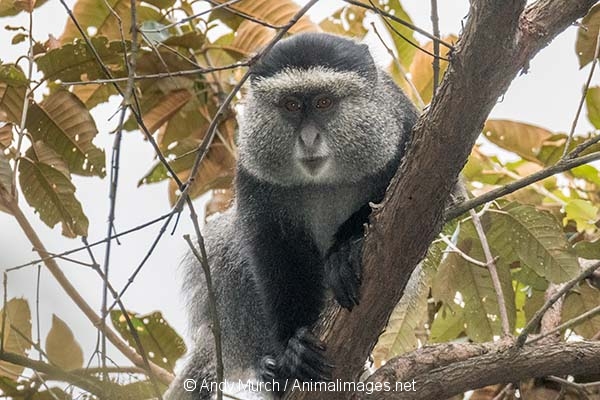
L’Hoests Monkeys. We saw these monkeys in Bwindi as well but we had much better encounters during our swamp walks around Kibale N.P.
We also saw them on our way in and out of Nyungwe N.P. in Rwanda, sitting at the sides of the road. I am not sure if they do this because they like open spaces or because they are hoping for handouts. We didn’t see anyone feeding them but I suspect that’s why they’re there.

The swamp tours were excellent for primate diversity. Each time we saw L’Hoests, redtailed monkeys, ashy red colobus monkeys, Guereza Colobus monkeys (aka black and white colobus monkeys) and Ugandan Crested Mangabeys.
Redtailed Monkey

Ashy Red Colobus Monkey

Guereza Colobus Monkey

Ugandan Crested Mangabey

We conducted two night walks in Kibale. On our first night walk we spotted a few Thomas’s Dwarf Galegos and one Demidof’s Dwarf Galego. Unfortunately, I didn’t get shots of either because they’re fast little monkeys and not keen on spotlights.
On our second walk there were no Demidof’s (images of that species still elude me) but I managed to photograph the larger Thomas’s Dwarf Galego when it froze for a few seconds mesmerized by our torches.

The Tantalus Monkey Finishing up the primate list for this year is the tantalus monkey. Vervet monkey species are rather hard to identify accurately in the field but based on location, I think these guys are tantalus monkeys rather than vervet monkeys, green monkeys or grivet monkeys. Either way, they are quite common primates throughout southern Uganda, and not camera shy. We saw troops of them in or near each park that we visited.

For our other mammal sightings, I’ll switch to a conventional timeline:
First stop out of Kampala was Ziwa Rhino Sanctuary; a small reserve where you can literally walk with wild White Rhinos.
We also bumped into a large herd of domesticated Ankole Cattle. This ancient breed has massive horns and is considered a separate sub-species from all other cows: Bos taurus africanus.
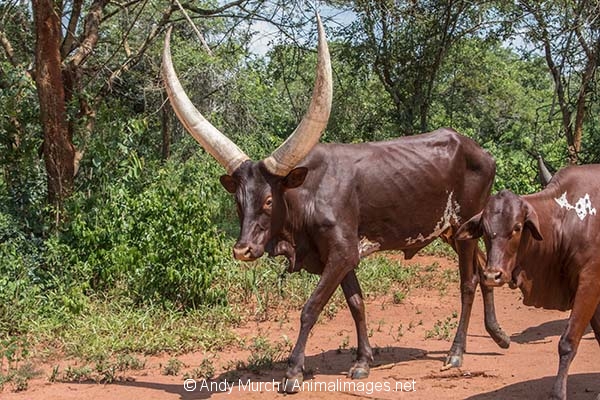
Our second destination was Murchison Falls National Park – one of the most spectacular parks in this part of Africa.
It is tough to find a spot anywhere within this enormous protected area where you won’t see animals of one description or another. The park boasts more than 900 Rothschild Giraffes, 40,000 Uganda Kob, 1400 African Bush Elephants, huge herds of Cape Buffalo, Hartebeests, Oribi and so much more.
Hartebeest

Rothschild’s Giraffes

Cape Buffalo
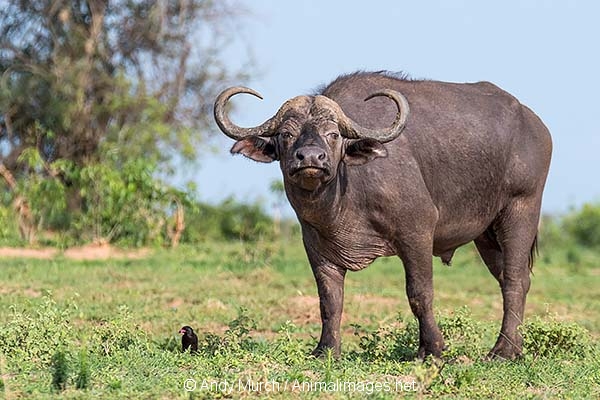
Some of the 40,000 Kob in the park.

Waterbuck (do you think they’ve seen us?)

A rather shy Cape Bushbuck. Not uncommon but they soon disappear once discovered.
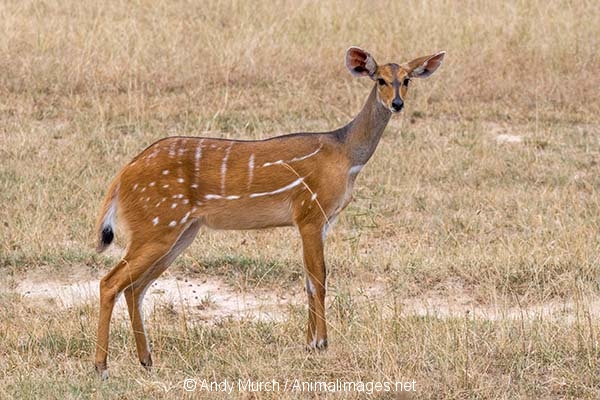
Bohor Reedbucks on the Savannah. First time I’ve seen this species in Uganda.
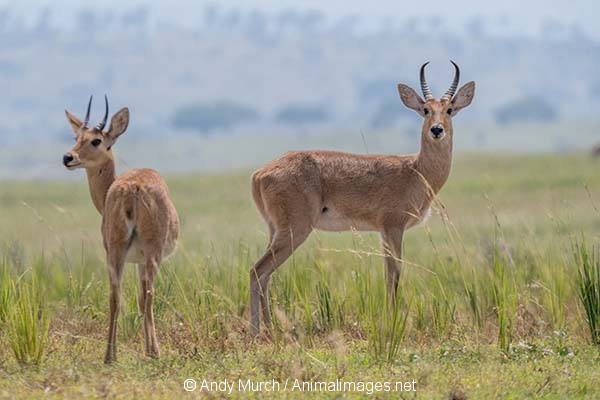
Oribi There are thousands of these pretty little antelopes running around in Murchison Falls N.P. but they are strangely absent in parks further south.

In the early morning, we also saw a couple of black-fronted duikers, but they saw us first and disappeared long before I could raise my camera.
Common Warthogs These guys were everywhere. Around the lodges, on the savannah and at the sides of the road. Hard to say how many we saw in total but it must have been in the hundreds. No matter how often I see them, their antics still make me smile.

On the subject of suids, in the evening we had a short encounter at the lodge with a family of bush pigs. Unlike warthogs, these are nocturnal forest dwellers and very shy around humans but they have a habit of cleaning up the vegetable scraps outside the staff quarters so getting images of them is not that hard.
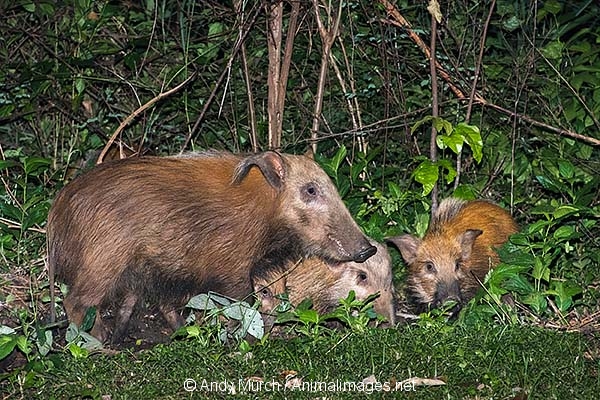
We also found a third species of suid, a family of large but secretive Giant Forest Hogs that disappeared into the forest as soon as they realized they were being observed.
African Bush Elephants. The herds in Murchison Falls can be huge. In one area we saw more than 100 individuals moving nose-to-tail along traditional migratory routes. In another region of the park, I would estimate there were a few hundreds more, stripping trees, mating and generally socializing. It was an impressive scene but hard to capture in its entirety. Individual portraits worked out a bit better.
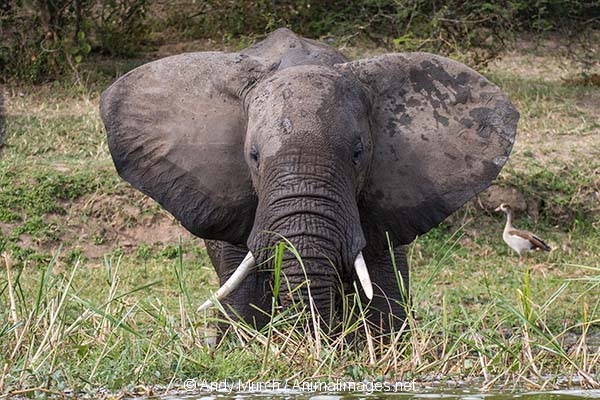
Spotted Hyenas This year we saw just one hyena in Murchison and another later in Queen Elizabeth N.P. but it was still nice to tick that box. Tree climbing Lions. We usually see quite a few lions in Murchison Falls but this one was a particularly nice encounter. Mom climbed up and waited for her fur balls to gingerly join her. They took a little coaxing and she finally went down and grabbed the bottom one by the scruff of his neck to lift him off the ground for that initial boost.

Finishing up the big cats, we also had a Leopard encounter albeit rather a distant one.
Of course, we stopped in at the falls themselves, to enjoy the sheer power and visual spectacle. No mammals to note but it’s a great place to photograph yellow headed agama lizards.

After Murchison Falls N.P. we moved to Kibale N.P. where we saw many of the primate species of the trip. Then we continued onward to Queen Elizabeth National Park. During the drives we saw many of the animals that we had seen in Murchison but in a drier, grassier environment. One notable addition was a small herd of Topi antelope in the southern reaches of the park.
The real highlight of Queen Elizabeth N.P. is the river cruise on the Kazinga Channel. Being a fairly arid park, much of the wildlife congregates along the shoreline. The riverboats get quite close so there are endless great photographic opportunities.
African Forest Buffalos and Cape Buffalos laze around in large groups on the shore or wallow at the edges, seemingly oblivious to Nile Crocodiles swimming around them. I sometimes hear Forest buffalos referred to as a unique species but the general consensus is still that they are a subspecies of cape buffalo. In Queen Elizabeth, the two versions readily hybridise so the reddish animals you often see along the shores of the Kazinga Channel are unlikely to be 100% forest buffalo. Regardless, they are very different looking from their darker, southern kin.

The channel also holds elephants galore that constantly wander in and out of the bush. There are African forest elephants in Uganda but not here. These ones are simply African bush elephants that live in the forest. Perhaps most iconic in Kazinga are the herds of hippopotomus. Rafts of these enormous, extremely aggressive animals float close to shore, duck diving occasionally to munch on aquatic vegetation. There were so many, I believe you could run on their backs to shore but I decided not to try it ☺
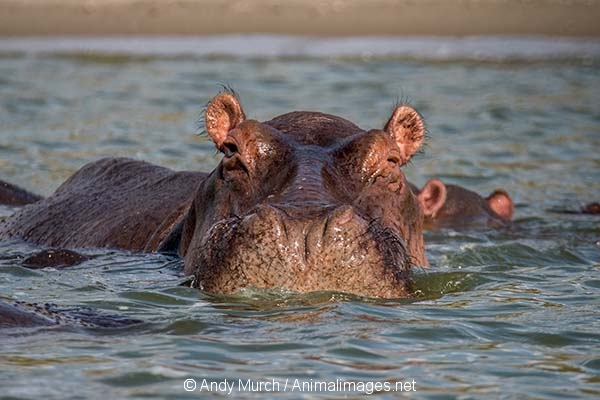
A fun side trip while in Queen Elizabeeth N.P. is a visit to a small village near the boat launch to the Kazinga Channel. Here there is a habituated family of Banded Mongooses that you can get extremely close to. Since last year, storks and other large avian predators have been predating on the young of the year so the family has shrunk from 20 something to 15 individuals. The mongooses now have a human guard that follows them around all day to scare off attackers but tourists can still get as close as they want.
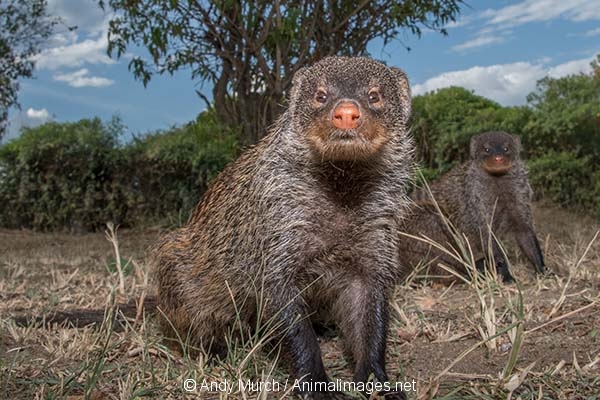
Speaking of mongooses, while chasing the bushpigs in Murchison Falls, I spotted a dark brown mongoose foraging in the grounds of the lodge. Since the trip, some more learned folks than me have identified it as a White-tailed Mongoose – Ichneumia albicauda even though this particular animal has a black tail.

We did not have time to hunt for any smaller mammals but we did see a few squirrels and rabbits. In Murchison we came across a couple of Striped Ground Squirrels and in Bwindi we spotted some reddish tree squirrels that could have been virtually any species that occur there.
No pics of the striped ground squirrels this year so I’m sneaking in an image from our 2017 Uganda trip.

On the way back to Entebbe we had two nice surprises. The first was a tree filled with hundreds of roosting Straw-coloured Bats. We came across them about 3hrs north of Bwindi N.P. on a back road somewhere before you connect to the main road that runs to Kampala. FYI, we saw lots of other bats in the evenings but none that I could positively identify as they were all in flight and I wasn’t carrying a bat detector.

The final surprise was a herd of Plains Zebra at the edge of Lake Mburu N.P. We were not actually visiting the park; we were just driving by on our way home but the zebras were right on the park boundary so we stopped and enjoyed them for a while.

Mammal-wise, that was our 2018 trip. Can’t wait to get back there next year! I’m especially excited about including a night drive in Murchison, which should yield some interesting new critters!
Our Mammal list: 42 Species
PRIMATES
Eastern Gorilla – Gorilla beringei
Chimpanzee – Simia troglodytes
Olive Baboon – Papio anubis
Uganda Crested Mangabey – Lophocebus ugandae
Guereza Colobus – Colobus guereza
Angolan Colobus – Colobus angolensis
Ashy Red Colobus – Piliocolobus tephrosceles
Red–tailed Monkey – Cercopithecus ascanius
Blue Monkey – Cercopithecus mitis
Golden Monkey – Cercopithecus kandti
Patas Monkey – Erythrocebus patas
Tantalus Monkey – Chlorocebus tantalus
L’Hoest’s Monkey – Cercopithecus lhoesti
Thomas’s Dwarf Galago – Galagoides thomasi
Demidof’s Dwarf Galago – Galagoides demidovii
UNGULATES
African Bush Elephant – Loxodonta africana
White Rhinoceros – Ceratotherium simum
Commo Warthog – Phacochoerus africanus
Bush Pig – Potamochoerus larvatus
Giant Forest Hog – Hylochoerus meinertzhageni
Giraffe – Giraffa camelopardalis
Plains Zebra – Equus quagga
Common Hippopotamus – Hippopotamus amphibius
Cape Buffalo – Syncerus caffer
Ankole Cattle – Bos Taurus africanus (yes, I’m counting these)
Waterbuck – Kobus ellipsiprymnus
Kob – Kobus kob
Cape Bushbuck / Imbabala – Tragelaphus sylvaticus
Bohor Reebuck – Redunca redunca
Oribi – Ourebia ourebi
Hartebeest – Alcelaphus buselaphus
Topi / Tsessebe – Damaliscus lunatus jimela
Black-fronted Duiker – Cephalophus nigrifrons
RODENTS AND LAGAMORPHS
Striped Ground Squirrel – Xerus erythropus
Tree Squirrel sp. – Possibly Heliosciurus sp.
Bunyoro Rabbit – Poelagus marjorita (tentative ID)
BATS
Straw Coloured Fruit Bat – Eidolon helvum
CARNIVORES
Lion – Panthera leo
Leopard – Panthera pardus
Spotted Hyena – Crocuta crocuta
Banded Mongoose – Mungos mungo
White-tailed Mongoose – Ichneumia albicauda
Andy Murch – Trip Leader Bigfishexpeditions.com